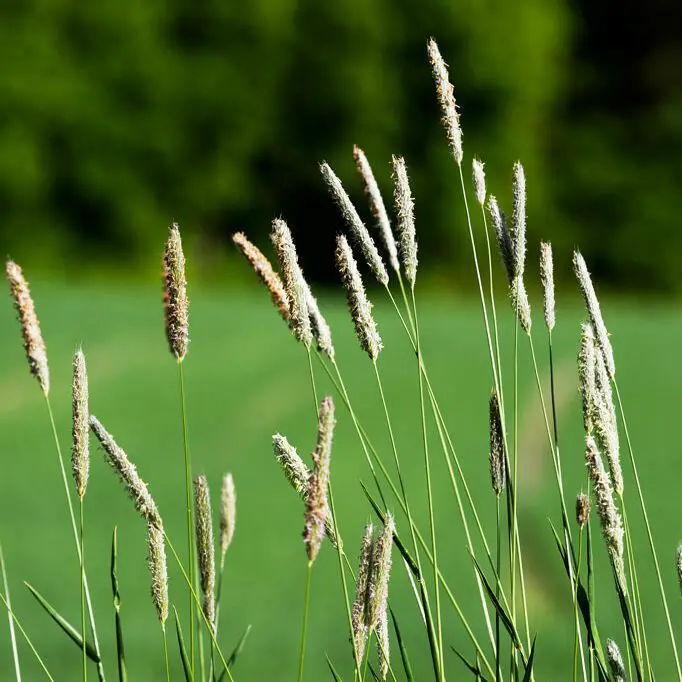Timothy Grass: Nurturing Nature’s Grace in Cool-Season Gardens

In the vast canvas of nature, Timothy grass is a delicate brush stroke – one that brings harmony to the intricate fabric of our landscape. For gardening enthusiasts, understanding and growing this flexible and elegant lawn can not only elevate the beauty of the cool-season garden, but also serve as a vital contribution to the well-being of the environment. In this comprehensive blog post, we’ll explore the multiple ways timothy grass is a valuable asset for any green-fingered enthusiast looking to boost a slice of serenity in their outdoor space.
The Unspoken Elegance of Timothy Grass
Nestled in the family of cool-season grasses, Timothy grass (Phleum pratense) stands out for its versatility and grace. Commonly found in fields and meadows, it is often overlooked in the gardening world. This oversight, however, does no justice to its numerous benefits, especially when thoughtfully integrated into a designed garden. Timothy grass can lend a soothing, textured character to garden landscapes that mirrors the tranquil essence of its natural habitats.
Beyond aesthetics, Timothy grass is a powerhouse of nutrition for livestock, an ally in soil conservation, and an ecological beacon that supports wildlife. In this post, we will not merely scratch the surface of Timothy grass’s potential in cool-season gardens — we shall plumb the depths to uncover the myriad ways it enriches our natural surroundings.
Benefits of Timothy Grass
Nutritional Value for Livestock
Few grasses match Timothy’s reputation as a forage grass. With a high fiber content that is well-tolerated by many grazing animals, Timothy grass is a staple feed that ensures the health and well-being of livestock, from horses and cattle to small ruminants like sheep and goats. Its digestibility and palatability make it a premium choice, making it a smart addition to any working farm or homestead seeking to enhance the quality of its animal husbandry practices.
Soil Improvement and Erosion Control
Timothy grass is more than mere sustenance for livestock; its extensive root system offers compelling soil stabilization benefits. The dense mat that forms through its growth effectively combats soil erosion, making it a prime candidate for the rejuvenation of disturbed soil. Erosion-prone areas, such as hill slopes and regions recovering from construction or other disturbances, can benefit immensely from the protective cover and stabilizing action of Timothy grass, which in turn lays the groundwork for nurturing healthier soils.
Wildlife Habitat Enhancement
Envision your garden not just as a personal sanctuary but as an ecological oasis. Timothy grass plays a pivotal role in promoting biodiversity by serving as a habitat for many insect species and seed-eating birds. Its sheltering traits also appeal to larger wildlife, offering a sanctuary that is a nexus of the food web. By incorporating Timothy grass, gardeners can contribute to the larger ecosystem, inviting nature’s biodiversity right into the heart of their green spaces.
Cultivating Timothy Grass in Your Cool-Season Garden
Upon recognizing the array of benefits Timothy grass offers, the logical next step is to master its cultivation. Below, we outline the steps to introducing Timothy to your garden.
Ideal Growing Conditions
Timothy grass flourishes in temperate climates with cool growing seasons. It is hardy in USDA zones 2-7, and given its adaptability, can thrive in most soil types that are well-drained. It performs best in full sun but can tolerate some shade, making it a versatile addition to gardens with varying light conditions.
Planting and Maintenance Techniques
For new gardeners, the thought of planting grass may seem daunting. However, the process is straightforward. Begin by preparing the soil, ensuring it is free from debris and sufficiently loosened to facilitate healthy root development. Seed should be planted at a depth of about ¼ inch and ideally covered with a light top-dress of soil to promote germination.
Once established, Timothy grass requires little maintenance, showcasing its workhorse nature. Regular watering to keep the soil moist during initial growth, followed by a more infrequent but deep watering schedule once established, will suffice. Mowing should be done with care, ensuring not to remove more than one-third of the blade’s length in a single session.
Companion Planting Suggestions
No plant exists in isolation, and Timothy grass eagerly participates in the mutualistic dance of companion planting. It pairs well with a variety of flowering plants and shrubs, acting as an anchor to more ethereal species with its robust blades. Tall perennials like coneflowers and ornamental grasses can be elegantly set against the textured backdrop of Timothy grass, achieving a harmonious visual ensemble.
The Environmental Impact of Timothy Grass
Sustainable Practices with Timothy Grass
In an era where sustainability is a paramount concern, the use of Timothy grass aligns with eco-conscious gardening practices. Its role in erosion control is indispensable for maintaining the integrity of the land, while its efficiency as an all-around pasture grass contributes to sustainable animal agriculture.
Biodiversity Support in Gardens
Timothy grass is more than a passive observer in the garden’s ecosystem. Its presence enriches the garden environment, attracting a proliferation of beneficial insects that are the backbone of a thriving, balanced ecosystem. By nurturing such a biodiverse landscape, gardeners uphold the ecological value of their space and contribute to a larger, more interconnected environment.
Water Conservation Benefits
In the age of water scarcity, the need for water-efficient gardening practices is critical. Timothy grass’s low maintenance requirements translate to less water consumption, an essential consideration for sustainable garden design. Its moisture-retentive qualities also aid in retaining soil moisture, making it a valuable ally in drought-prone regions.
Conclusion
Timothy grass brings the verdant whispers of nature’s grace to the realm of cool-season gardens. Its versatility, from a powerhouse for livestock nutrition to an essential component of ecological landscaping, is a testament to its value. By considering the incorporation of Timothy grass into gardening plans, enthusiasts can craft sustainable, bio-diverse environments that not only soothe the soul but also bolster the health of our precious earth.
The adoption of Timothy grass in cool-season gardens is an invitation to harmonize with the rhythms of nature. It is a call to acknowledge the gifts of the wild and weave them seamlessly into our cultivated spaces. For those with a passion for the earth and its bountiful offerings, Timothy grass stands as a beacon — a tribute to the subtle beauty and robust sustainability we can achieve when we work hand-in-hand with the natural world.







